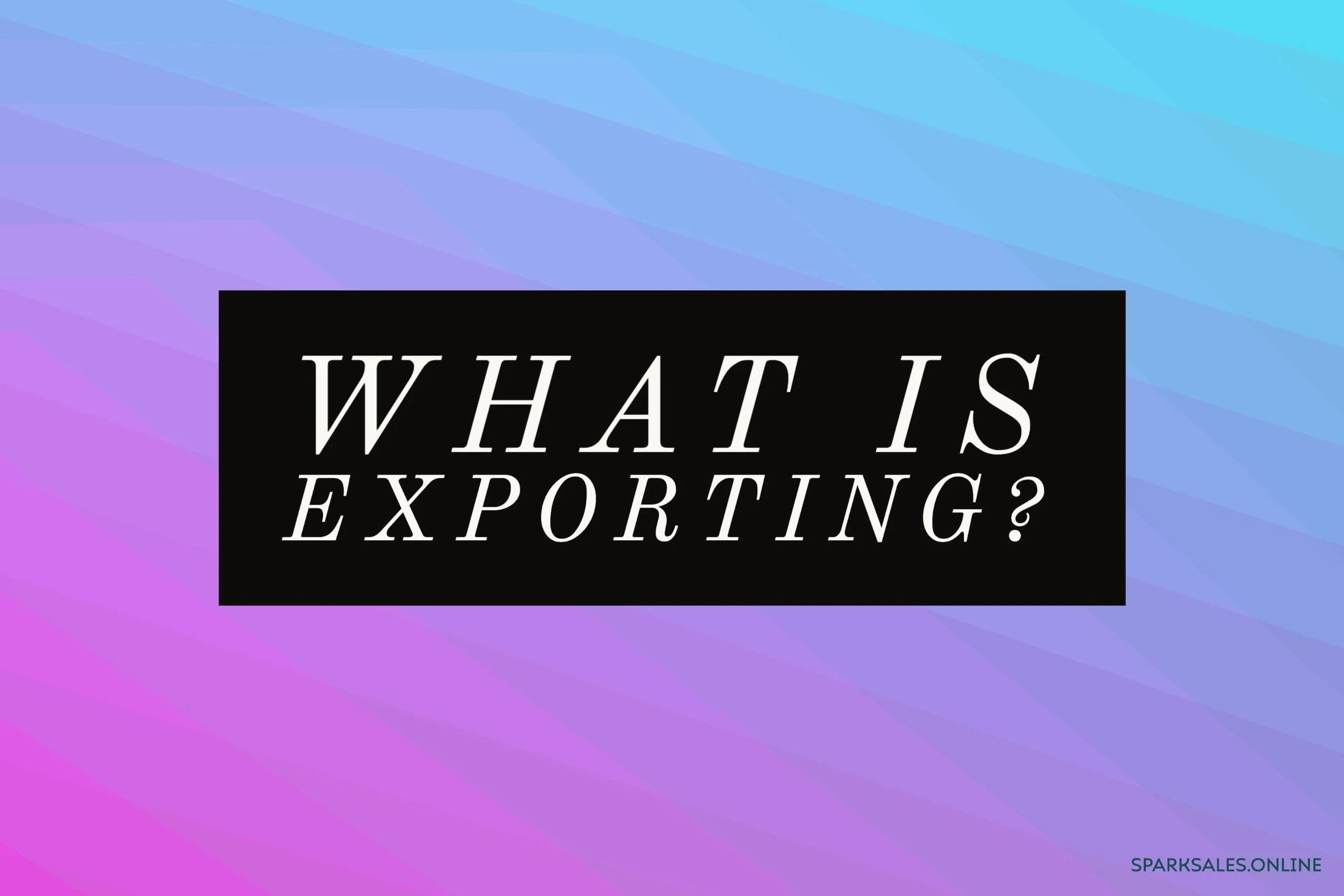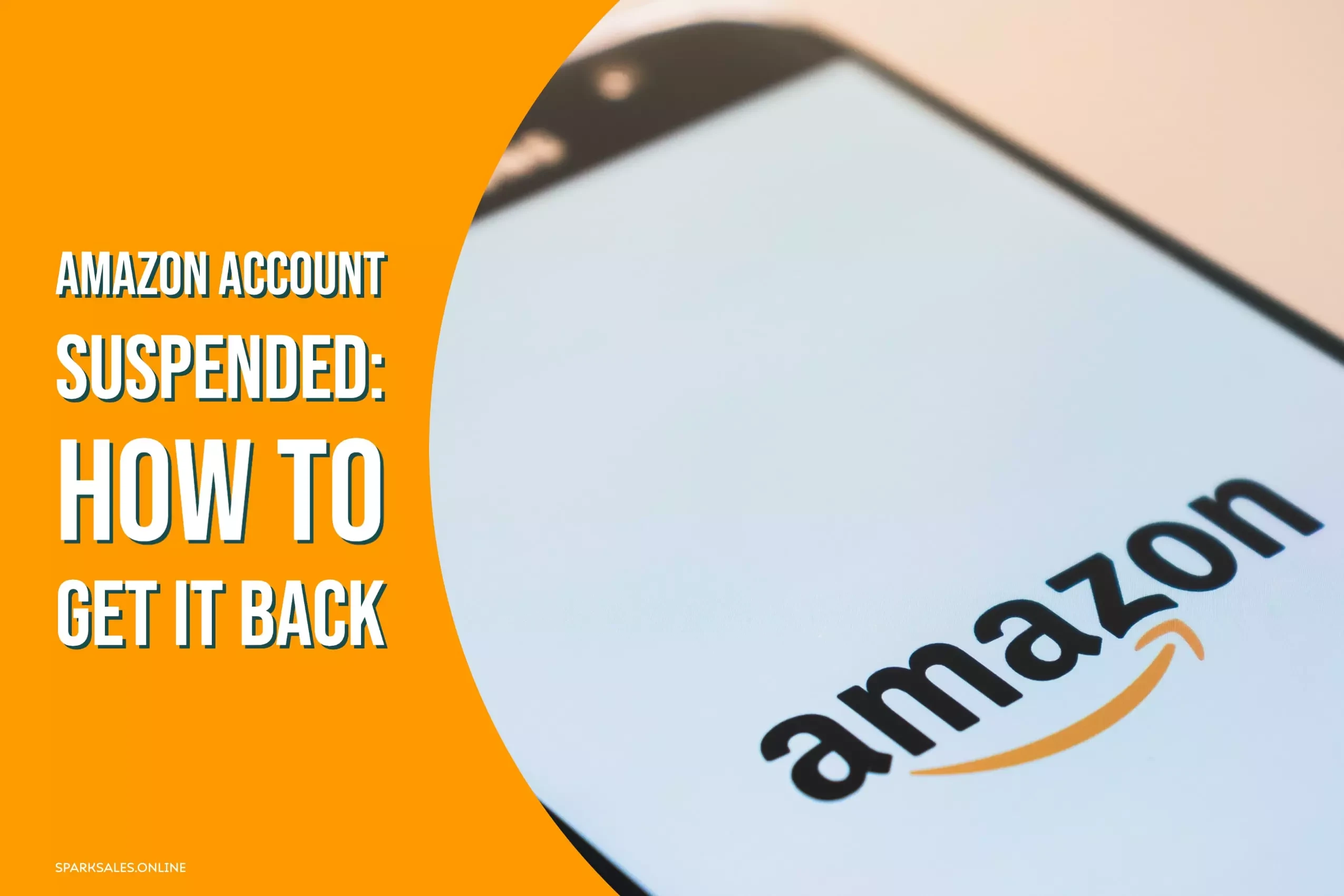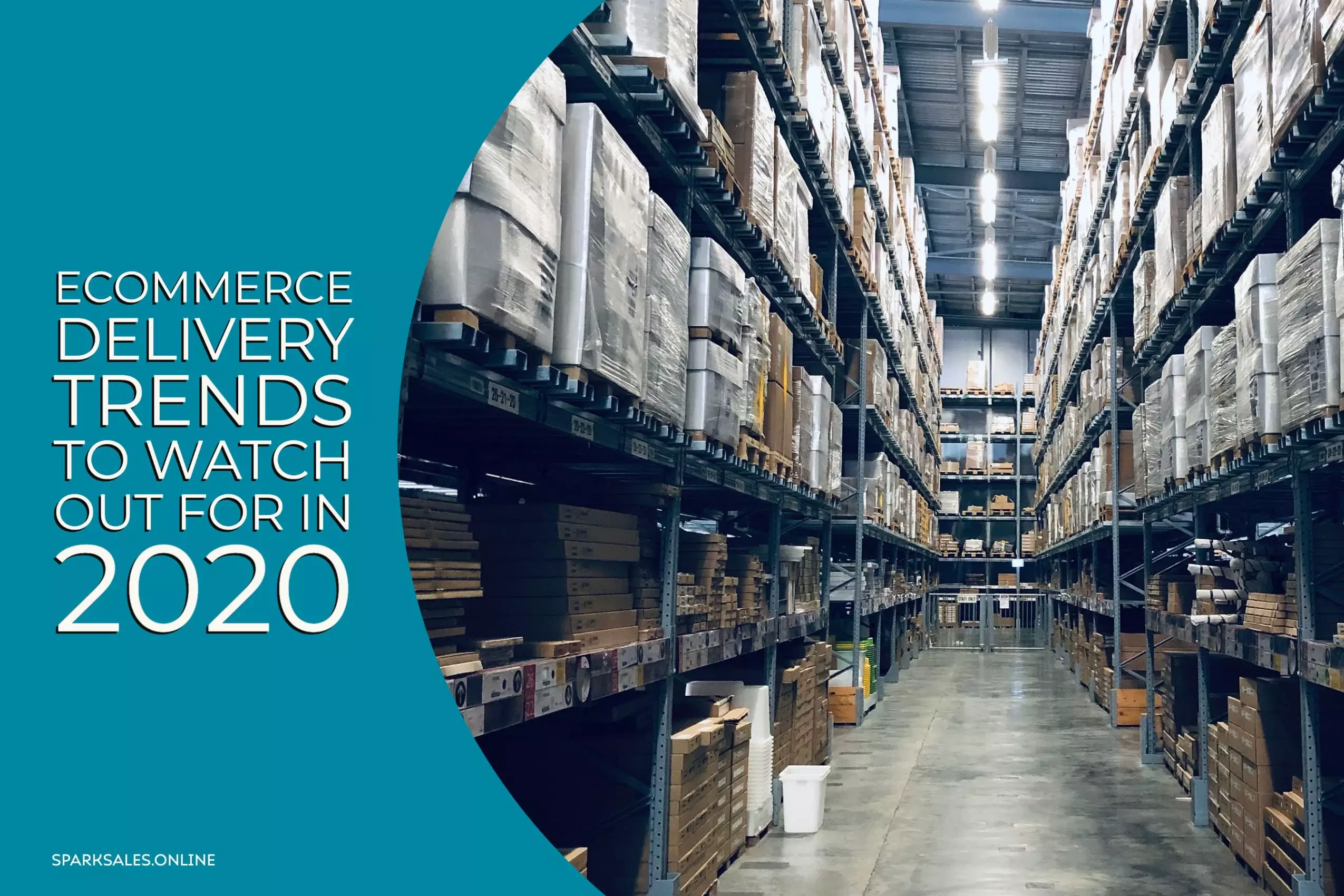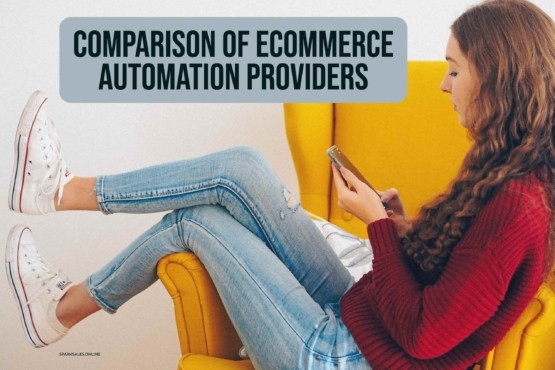What is the meaning of the word exporting? Exporting is the commercial activity of selling and shipping goods to a foreign country. Most small and medium enterprises are either already exporting or are looking into exporting at some point in time. Of course, the word export comes from the conceptual explanation of both goods and services shifting out of a country’s ‘port’. The merchant of those products and services is called an exporter.
Exporting has a substantial impact on any economy because whenever you’re exporting goods out of the country, it increases the manufacturing of goods, increasing the demand. Still, we have to be very careful because we have to balance what we are exporting and what we are importing, so we don’t get into any deficits. Some countries import much more than they export, which puts them into deficit because there might not be enough market for importing goods. So it’s imperative to be careful about that, which is why authorities closely govern international trade regulation and commercial activity.
There are two types of export:
- Physical exports
- Non-physical exports
![]()
Ways To Export
- Direct Selling: Exporting goods and services to be sold to an independent party outside of the exporters home country.
- Direct Selling – Middlemen: In this way, distributors in international countries are used. Of course, these distributors and merchants will need to keep a stock inventory of the product they distribute.
- Direct Selling – International Retailers and Consumers: Here, you are selling directly to retailers and end-users.
Why Would a Company Be Interested in Exporting?
UK retail needs to grow, and for UK retail to grow, it needs to find new markets worldwide to sell its products. The UK is a small country; therefore, markets can only grow so much. So the opportunity for most businesses is international, and exporting is a huge part of that. Exporting not only can grow your business, but you’ll also be able to reach many new customers and diversify your business.
Historically, exporting is just something that the UK has always done, and we’re probably good at it because we live on an island, and we’ve had to be. To survive, we’ve had to get out there, visit other places, make friends and sell them things.
Export provides growth opportunities and offers excellent opportunities for sellers to develop their brands in new markets. Don’t be afraid to try it for your business. Use the help provided by the Department for International Trade, and use partners to help you find the roadmap for where to go; that’s the most challenging thing because once you know the roadmap, you’ll find your brand is very welcome worldwide.
So, I’m going to go through some reasons why you should think about exporting, questions you need to be asking yourself and where you can go to get help with those questions. Even for US companies in an enormous country of their own, there’s still a whole world out there of potential buyers, and it’s much more significant than their domestic base. Did you know that 95% of the world’s consumers are not in the USA? They’re in other countries and markets, and because of that, growth will come from those other markets. It’s not going to come from within the united states.
For the USA, GDP growth is typically going to come from international trade. Believe it or not, when you’re selling overseas, you’re naturally a more profitable company because it gives you opportunities to expand your business and also make profits. One other potential benefit is that it offers you the opportunity to diversify your base of customers. If there is a downturn in your country’s economy, perhaps you’ve got a market in another country that can pick up the slack when things are not going as well? Maybe you’ve got a product that’s not going to sell in the US in the wintertime, but you can go to another country that’s in a different hemisphere and market to them in your down season.
Believe it or not, even though the pandemic has brought all kinds of struggles for business owners: the lack of travelling and the lack of one-on-one interactions, to name a few. Exports are still going strong. For many companies, their export sales are booming right now. To give you a quick example, there’s a company in Rhode Island in the united states that make raincoats for a very niche market; they’re for bicyclists, so you can imagine what a raincoat/cape has to look like if you’re riding a bicycle! Their international sales are up by over 400% because people in Europe, in particular, are currently not using mass transport. They’re not taking the metro, buses or trains, so they’re getting out their bikes and riding them to work, and they’re wearing these capes. So there are certainly opportunities to take advantage of the situation and increase your business overseas.
You might start to think about exporting if you’re getting inquiries coming in through your website. Perhaps you’re getting ecommerce opportunities; maybe you’re getting unsolicited requests because people have seen you on some other digital platform. Maybe you have personal relationships with people overseas, or maybe you’re selling to a company in the UK that has contacts overseas. The options are numerous, and there are many ways to get started with exporting.
![]()
Do I Need an Export Plan?
Yes, it would help if you had a plan because otherwise, it’s never going to become strategic, and it’s never going to become something that you can build upon; it needs to continue to grow. So one of the things that we’re going to cover today is how to figure out what your export plan should be.
As an encouraging point, according to the US small business administration, small businesses are presently bringing about the majority of net new jobs. These small businesses are selling internationally, and that’s one way they’re able to grow. In fact, 98% of US exporters are small businesses.
What Does It Mean To Export?
I think almost everybody when they think of export, thinks of a physical product. People think of appliances or screws that go into machines, maybe even finished products like automobiles. They’d be right, these things are exported every day, but did you know that you can also export services, export technology, and even ideas? Hence, one of the things to think about when we talk about exporting is what exactly it is that you export.
The transportation methods that come to mind when we think about sending products internationally are usually:
- By air
- By the ocean
- By train
But there are also other ways that exports can be accomplished. Some of these may surprise you:
- The obvious one is to send something through the post; we’ve got courier services and shipping partners for that.
- You can also technically be exporting something by having a phone conversation. If you’re sharing information, technology, advice, guidance or knowledge, these could all be ideas that you can’t share based on your country’s regulations. Just having a conversation and sharing information can be considered an export.
Think generally about what you can export. Then about what the rules and regulations are going to be that apply to your particular scenario. When we talk about services, it could be any of the financial, legal, hr, engineering, consulting services; the list goes on and on.
We may not think of education or tourism as an export, but you need to ‘follow the money’ when decided whether it is or isn’t. So when you think of tourism, you’ve got international visitors coming to the UK and spending money here. That’s an export because a foreign party is paying for that; the capital’s coming in from overseas.
Similarly, we can export education. When we bring international students to the united kingdom, they bring in foreign money to receive that product. So that’s an export, we’re selling them an education, and we’re getting their currency to pay for it.
What Is a Deemed Export?
The other type of export mentioned earlier is a specific US regulation, which is deemed export.
- This is something that you are sharing that’s controlled (meaning controlled by the US government) with a foreign person.
- This could be technology or even source code.
- It could be shared in the United States or overseas.
- Even though it may not even have left the country, you could have shared it with someone who’s a non-us citizen, and if it’s controlled by the US government, that’s not allowable.
- So again, just broadening your understanding of what exporting means can be very helpful.
So Who Is the Exporter?
The exporter is the person who’s selling that product overseas. So if you make a sale to an international buyer and ship it out of the UK, you’d receive payment from that international buyer and then it’s considered an export, and you’re the exporter.
However, if you’re selling something to somebody in your domestic country that they’re then putting into a product and then selling overseas, you’re not the exporter. Technically speaking, you’d have to sell it overseas and receive that international payment for you to be the exporter.
How Do You Become an Exporter?
In the UK, anybody can be an exporter. Still, you have to abide by UK government regulations regarding whether you need a particular license or permission to sell specific products. However, just to be an exporter, you certainly don’t need to get a permit for that because anyone can be an exporter, but you have to comply with UK government regulations.
![]()
How Do You Know if You’re Ready?
How do you know if exporting is for you? You complete what is called an export readiness assessment to help you. There are no right or wrong answers to this; this isn’t a pass or fail test. It’s to get you as a company thinking about exporting, what it’s going to take and if this is something you want to invest and become engaged in as a long-term effort. So if you’re ready, you’re going to have to set realistic expectations for yourself and make sure that your company has the resources and can execute the strategy.
These are some questions to ask yourself to help you compile your export strategy:
Current Business Goals
- You need to ask yourself how well established is my current business?
- Do you have a strategy in place to expand your company domestically?
- How would you define your business goals for the next five years?
International Business Goals
- How vital are export sales within your business goals?
- What % of your current business is international?
- What do you expect that number to be in 5 years?
- Why do you want to focus on exports?
- Do you currently have an export marketing strategy?
Resources
- Who’s going to be responsible for your exports?
- Do you have the expertise in-house on how to export or know how to get that expertise?
- Can you provide training for your staff?
- Do you have production capacity?
When we talk about resources, it’s worth remembering that cash flow is essential because you need to be able to invest in your product. You may need to adapt your product to the international market or put some advanced money into marketing your product. So understanding cash flow is critical.
Business Objectives
- What is your tolerance for risk?
- How long do you think it will take to make your first export sale?
- How long are you willing to wait for results?
- How high would you rate developing your international business on your priority list?
Your Product/Service
- Do you have a clearly defined product/service?
- Why do you believe you can export your product?
- Are you prepared to make alterations to your product or service, if needed, to meet international requirements?
Target Market
As an exporter, you need to remember that you can’t be all things to all people; you have to identify what you want to be and who you want to present it to.
Are You Ready To Go International?
- Do you believe that you have management commitment?
- In-depth experience with the product and competitive advantage?
- Do you have all of the resources you’ll need?
- Plus production capacity and capability?
How Do You Get Started?
So the essential starting point for any of this is basic planning. For those who may not have an established business, you need to figure out what your business will be and go ahead and create a business plan.
Suppose you already are an established business and you’re ready to create your export plan, and you want to select the best market. In that case, that’s when you can then start taking advantage of some of the services that the Department for International Trade offers.
Essential Elements of an Export Plan
- Commitment Statement: Statement of goals and objectives
- Product: Define your product or service
- Price: Understand your costs, your competition, your competitive positioning and profitability goals
- Promotion: How are you planning to promote your product? How will you market and support your development?
- Positioning: What is your competitive position? Understand your competition and your marketing entry strategy
- Dedicated resources: Money, time and people
- Action plan: Assign responsibilities. Allocate resources, set schedule and goals
So these are the elements of an export plan. Under your export plan, you want to set out your dedicated resources you have for this and have an actual action plan with goals and timelines to work towards.
Now we’re going to look at the choices you have as an exporter when looking at international ecommerce:
- You can go on to a big generalist marketplace (Amazon, Alibaba, etc.)
- In-market distributor/specialist marketplace (Rexel, Cotswold Fayre, etc.)
- DIY ecommerce – build your own platform (Shopify, Squarespace, etc.)
- Combine various parts of the above
There are various solutions for different companies, and there are four main options for exporters. Let’s look at the first one; now, there are significant global marketplace leaders worldwide. The big global ones are sites like Amazon, Alibaba and Rakuten. We often find that international investors and exporters sometimes stick to their home giants when choosing a general marketplace.
If you’re in the US, you tend to only think of Amazon. However, you might want to start thinking about some of the other regional leaders if you’re going to have a solid international presence. So if you’d like to build your market in South America, you’d consider MercadoLibre, or if you’ve got the right kind of products, perhaps Zalando is the best one for you? So think about other regional leaders as well as those huge giants.
Now there are many general marketplaces, and without a doubt, they’re easy to use. Sites like Amazon or Alibaba offer a sort of one-stop shop. It’s an all-inclusive package that can include warehouse management, logistics, customer service and almost everything you need. However, there are costs involved.
Let’s look at Alibaba as an example and at some of the disadvantages. On the surface of it, going with 1688 or Alibaba seems like an easy thing to do if you want to get ecommerce traction in China, which can be challenging. However, there are quite a few constraints that are involved with this option:
- You need a Chinese-registered company.
- You have to have Chinese in-market customer service 24/7 (and if you can’t provide it, they will charge quite a lot of money for it)
- In-market logistic platforms (you have little choice about which you can use)
- QR codes – are very pervasive in China but are also in other markets. So you’ve got to have QR codes everywhere, which involves rebranding all of your SKUs for that.
- Annual fees and commissions can be pretty high as well.
- Finally, I would note that although it looks like you can do your own marketing, the only pay-per-click that you can use on Alibaba is the Alibaba one itself. It’s exclusive, so indeed, you’re quite limited on your scope with that.
![]()
Specialist Marketplaces and In-Market Distributors
Looking at specialist marketplaces and in-market distributors, they’re certainly easy and quick to set up as well, and this suits companies with strong in-market distributors. There tend to be two types:
- Either a vast category (for example, DIY or electronics distribution companies), they do multi-brands and multi-categories.
- Or you’ll get a very focused one, and an example here is Rexel, a European leader in electrical supplies, and this is an industry-specific vertical.
Many companies opt for distributor websites when they just start trading internationally because the distributor takes care of all the marketing and inventory, and so on. It looks like a great solution if you’re starting out in a new market, especially if you have good relationships with your distributor.
There’s a range of positives and negatives with these options. They are all relatively quick to set up; you just allow the marketplace to take charge; most of them offer a sort of one-stop shop. They will look after the payment solution, fulfilment, and logistics, so those are the significant advantages of using a specialist marketplace or in-market distributor.
The disadvantages, though, are significant, and they sort of grow and increase over time:
- The biggest one is simply limited brand development.
- Your brand can be eclipsed or merged with either your distributor brand or other brands on the website.
- You have almost no marketing control via their websites.
- There are ongoing commissions and fees. Some of them look small initially, but they multiply, and they certainly add up quickly.
- There are other costs that you don’t always think about at the very beginning, which start adding up as well.
- Finally, you can have some conflicts of interests because you could be on the same page as a significant competitor.
Those are the significant disadvantages and advantages of both the generalist marketplaces and in-market distributors.
DIY Ecommerce – Build Your Own Platform
Now let’s look at DIY, so this is when you construct your own ecommerce platform. There are many platforms to go to, and there are many different types of plugins you can choose from. WordPress is an excellent example of that. WordPress started life as a blogging platform but has now bolted on lots of additional plugins and add-ons, and they’ve rebranded as an ecommerce developer/website developer.
There are currently around seven various ecommerce platforms that are compatible with WordPress, the largest of which is WooCommerce. WooCommerce powers nearly 20% of all ecommerce websites on the internet, especially for B2C; it’s known for business to consumer.
Important points to take on board to choose the right DIY platform for you:
- Most importantly, if you’re going internationally, is it multilingual? Some of them aren’t.
- Is it right for global and international business?
- How easy is it to add widgets or plugins that allow for different types of payments or other languages?
- Is it scalable? After all, your ambition is to grow.
The advantage of a DIY option is that you’re in control. You know what the costs will be; you’re in control of your marketing and have client visibility. That is important because you are building long-term databases, and you’re making genuine client lists. That’s another significant disadvantage of having either the generalist or in-market distributive platforms.
The disadvantages are that you’ve got to be pretty techie, or you’ve got to have a technical team. It’s mostly going to be staff time: who’s going to market? Who’s going to be dealing with this? You’ve got to continuously nurture it and make sure that you’re setting aside resources to upgrade, support and integrate.
The logistic, payment and marketing side can also get very complex once you start looking at different markets. If you start looking at three, four or five different types of big international markets, you’re going to have different systems in each one, so it can be challenging.
![]()
Combination of the Above
The next option for exporters is combining parts of the above, eliminating many of the already noted disadvantages. So to start with, you’d build a localised website for your company. If you want to sell online in France, you’d create a .fr company website for your business. Having your own website allows you to be in charge of many aspects that you need to control, like marketing, brand development, and even visibility. Having a localised website and reinforcing that with online marketing will mitigate some of the disadvantages of generalist marketplaces, specialist marketplaces, or DIY platforms.
Some of the advantages of the combined approach
- You get all the benefits of having that in-market distributor.
- You have the advantage of having a sort of omnichannel presence.
- You control brand development and marketing.
- You have a market space.
- There are visible and transparent costs.
Some of the disadvantages of the combined approach
- Investment overhead costs.
- You do need some specialisation and technical teams, but you can outsource that to people easily.
The disadvantages are there, but they can be dealt with. The combined approach is a great way to build brand recognition and long-term sustainable growth in the international ecommerce market. Having localised websites and localised online marketing is an excellent way for ecommerce exporters to have their cake and eat it too.








